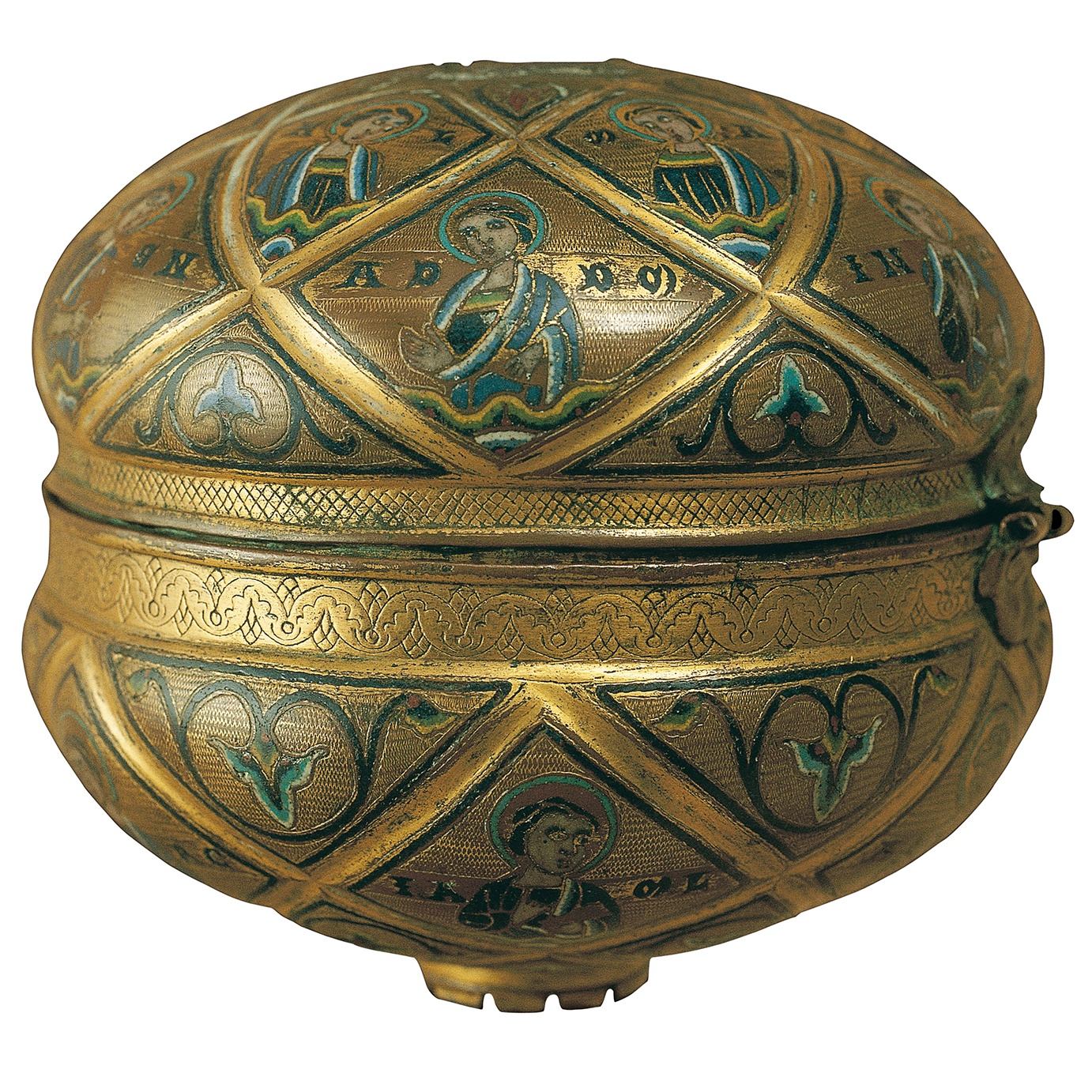The ciborium of the Cerdanya, around 1195-1200

The ciborium of the Cerdanya, around 1195-1200
The needs of worship and liturgy determined that in each church there should be objects, such as ciboria, which could reach a certain luxury with gold or silver coatings or with applications of precious stones. Many works, however, were made with more affordable metals such as golden copper and often decorated with enamels. Limoges, in the centre of France, was one of the most important places for the production of pieces of enamel in the Romanesque period and its objects can be found in many places in Europe. The Ciborium of the Cerdanya, of which only the central part is conserved of two semi-spherical pieces joined together, is one of the oldest examples that arrived of products from Limoges in Catalonia, and it is also an example of the reach of renewal trends from 1200.
Twelve of the eighteen figures represented, beardless and not very individualized, have been identified with the apostles (carrying a book), while the other six are considered to be prophets or angels, even though they don’t have clear attributes.
Ciborium from La Cerdanya, Anonymous, Limoges, circa 1195-1200









